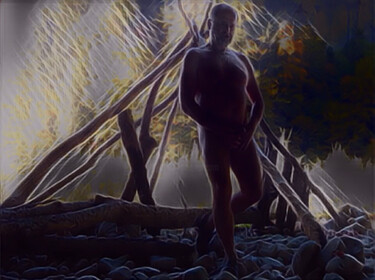"Fine-Arts" prints on paper
It is a process of printing on art paper using very high-quality pigment inks and printed in very high definition. Its level of conservation is exceptional (more than 100 years), its quality, depth, and richness of nuances exceeds the classic photo print on Argentic paper.

Glossy finish
Apart from its exceptional thickness, the fiber paper is composed of an alpha-cellulose base without acid and it is covered with barium sulphate, and a microporous layer absorption enhancing pigments during printing. A pure white color, non-yellowing to light, this paper is especially designed for resistance and aging. It is used by major museums worldwide as it offers excellent resolution, rendering deep and dense colors.
Art Print "Fine Art" - Glossy finish on a fiber base paper 325 g.

Our high end prints and reproductions
ArtMajeur only uses natural papers with neutral pH, resistant, and of high quality, selected from renowned papermakers!
Constant attention is paid by our master printer, whether in terms of color control or respect for the graphic chain. Our high level of quality requirement is a major asset of ArtMajeur framed art prints.
For Artists! You help artists to live from their work. They receive royalties everytime you buy their prints.
About our fine printsPurchase a license to use this image for your website, communications or to sell merchandise.
Usage: Web Licence
| 1500 px | ||

|
1118 px |
| Dimensions of the file (px) | 1500x1118 |
| Use worldwide | Yes |
| Use on multi-support | Yes |
| Use on any type of media | Yes |
| Right of reselling | No |
| Max number of prints | 0 (Zero) |
| Products intended for sale | No |
Download immediately upon purchase
This image is available for download with a licence: you can download them at anytime.
Restrictions
All images on ArtMajeur are original works of art created by artists, all rights are strictly reserved. The acquisition of a license gives the right to use or exploit the image under the terms of the license. It is possible to make minor modifications such as reframing, or refocusing the image so that it fits perfectly to a project, however, it is forbidden to make any modification that would be likely to harm the original work In its integrity (modification of shapes, distortions, cutting, change of colors, addition of elements etc ...), unless a written authorization is obtained beforehand from the artist.
Custom licences
If your usage is not covered by our standard licences, please contact us for a custom licence.
Art image bank-
This work is an "Open Edition"
Photography,
Giclée Print / Digital Print
- Dimensions Several sizes available
- Several supports available (Fine art paper, Metal Print, Canvas Print)
- Framing Framing available (Floating Frame + Under Glass, Frame + Under Acrylic Glass)
- Artwork's condition The artwork is in good condition
- Categories Outsider Art Spirituality
The figure's stance—raw, unadorned, yet deliberate—suggests vulnerability intertwined with quiet defiance, evoking themes of sacrifice, blame, and liberation. But with a twist: the “escape” signifies agency, a reclaiming of the self through art.
In a liminal space that blurs the boundary between shelter and stage, this body becomes a symbol of catharsis: a vessel through which societal burdens are shed. The “Escapegoat” represents the artist as both the sacrificial figure and the liberated subject, escaping imposed roles while bearing the weight of shared human impulses and taboos. By embracing the gaze, the figure offers a paradox: culpability as power, isolation as reclamation.
The Adamic figure embodies an archetype—defiance, rebellion, and consequence. The Biblical theme of banishment from paradise speaks to humanity’s eternal struggle with sin, shame, and self-awareness.
In this image, the figure stands outside the sacred—not illuminated by divine judgment but by the primal light of self-reclamation. No longer a symbol of shame, it instead becomes an emblem of liberation—a reversal of Edenic exile where the fallen refuse to hide. The shelter of wood and branches echoes the duality of salvation and burden: a humble sanctum recalling both the Tree of Knowledge and the cross, symbols of sacrifice, transformation, and redemption.
While the ancient notion of the scapegoat describes a creature ritually burdened with communal sin and cast into the wilderness, the "Escapegoat" does not wander in shame. Instead, this figure becomes a conscious exile, one who has chosen to shed societal guilt.
This merging of Biblical and personal mythology transforms the landscape into both sanctuary and stage—a reclaimed Eden where the self stands resolute in its naked truth, defying banishment through unapologetic presence.
This work reimagines Biblical exile as a fall that liberates rather than condemns: banished, but becoming.
Related themes
Friedrich Ursprung is a professionnal photographer and digital artist. He defines himself as a free-spirited iconoclast.
His work is eclectic from abstract to explicit, about the age of self-referential hedonism. He multiplies the images of himself to create a new one
Friedrich Ursprung is a selfie-thaught photographer. He studied method acting in San Francisco and storytelling in L.A.
-
Nationality:
SWITZERLAND

- Date of birth : unknown date
- Artistic domains: Works by professional artists,
- Groups: Professional Artist Contemporary Swiss Artists








